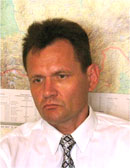Contents: 2024 | 2023 | 2022 | 2021 | 2020 | 2019 | 2018 | 2017 | 2016 | 2015 | 2014 | 2013 | 2012 | 2011 | 2010 | 2009 | 2008 | 2007 | 2006 | 2005 | 2004 | 2003 | 2002 | 2001
2015, 3
Physics of cavitation damage
language: Russian
received 21.12.2014, published 17.03.2015
Download article (PDF, 969 kb, ZIP), use browser command "Save Target As..."
To read this document you need Adobe Acrobat © Reader software, which is simple to use and available at no cost. Use version 4.0 or higher. You can download software from Adobe site (http://www.adobe.com/).
ABSTRACT
Physical mechanisms of cavitation damage are analyzed. The results of hydroelectric generator tests are discussed. The analysis suggests that the real water can not be considered as Newtonian fluid. Water can tear microvolumes away from solid. Therefore the most possible cause of cavitation damage is hydrofracturing, not hydraulic shock, caused by cavity collapse.
Key words: cavitation, cavitation damage, self-induced vibrations, Sayano-Shushenskaya power station.
10 pages, 6 figures
Сitation: V. Tarasov. Physics of cavitation damage. Electronic Journal “Technical Acoustics”, http://www.ejta.org, 2015, 3.
REFERENCES
1. Рождественский В. В. Кавитация - Л., Судостроение, 1977.
2. Пылаев Н. И, Эдель Ю. У. Кавитация в гидротурбинах - Л., Машиностроение, 1974.
3. Фомин В. В. Гидроэрозия металлов - М., Машиностроение, 1977.
4. Тимербулатов М. Г. Механизм кавитационной эрозии и влияние на нее коррозионной стойкости металлов . Физико-химическая механика материалов. - 1969. № 1.
5. Френкель Я. И. Кинетическая теория жидкостей - Л. Наука 1975.
6. Меттер И. Физическая природа кавитации. – В сб.: Успехи физических наук, Т. XXXV, №1, изд. АН СССР, 1948.
7. Зацепина Г. Л. Свойства и структура воды - М., Изд. МГУ, 1974.
8. Груздков А. А., Петров Ю. В. Кавитационное разрушение жидкостей с большой и малой вязкостью. ЖТФ 2008, том 78, вып. 3.
 |
Vladimir Tarasov - expert in diagnostics of generating units. National Research University “Moscow Power Engineering Institute” (MPEI), department of dynamics and durability. e-mail: DPM(at)mpei.ru |
